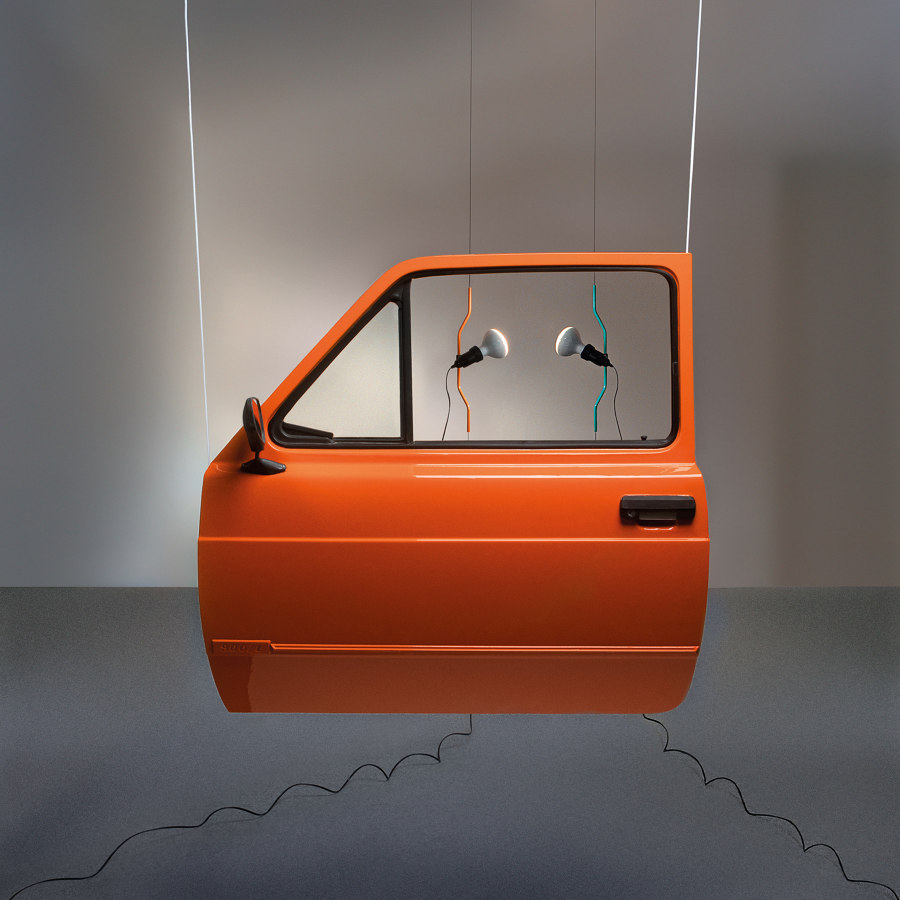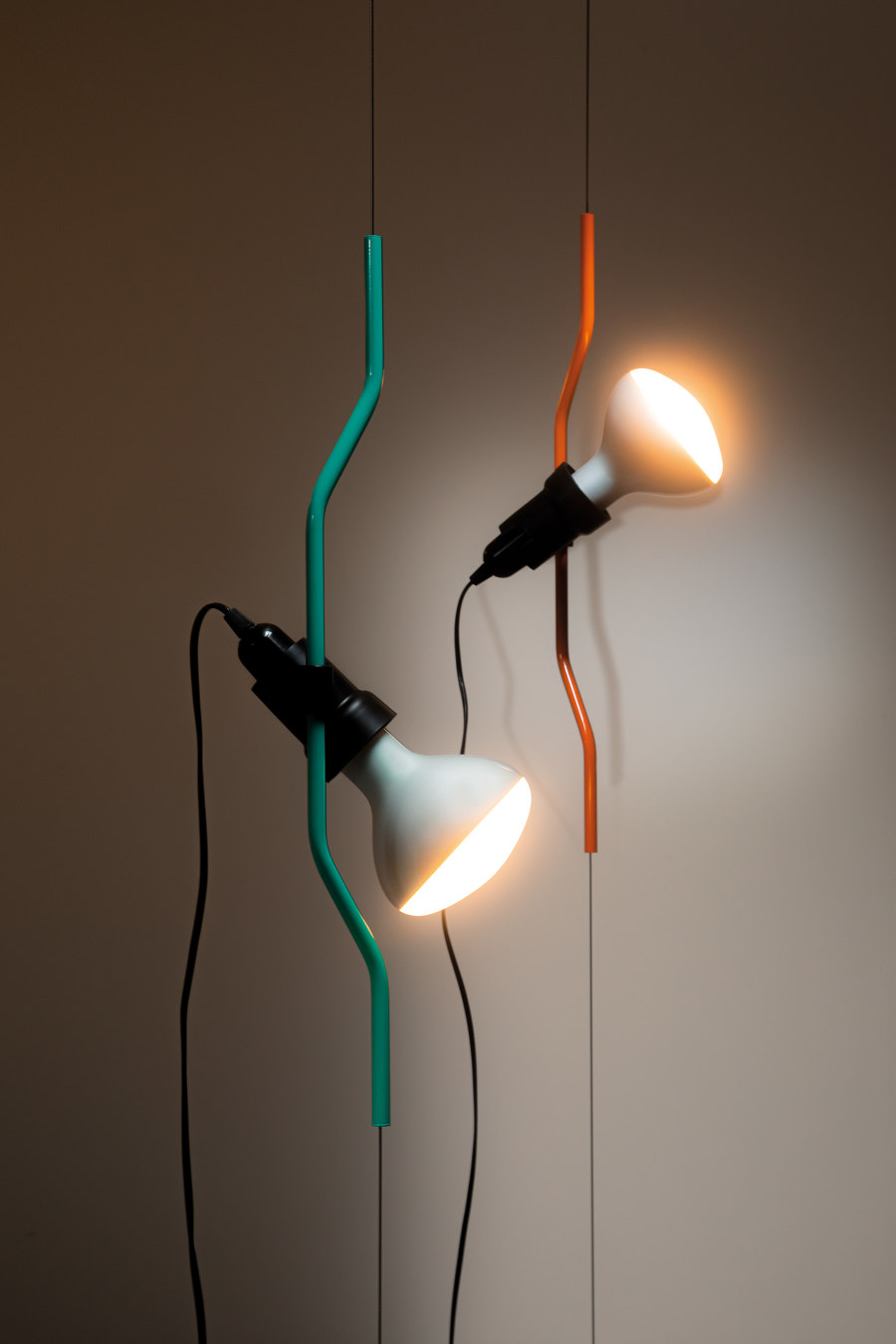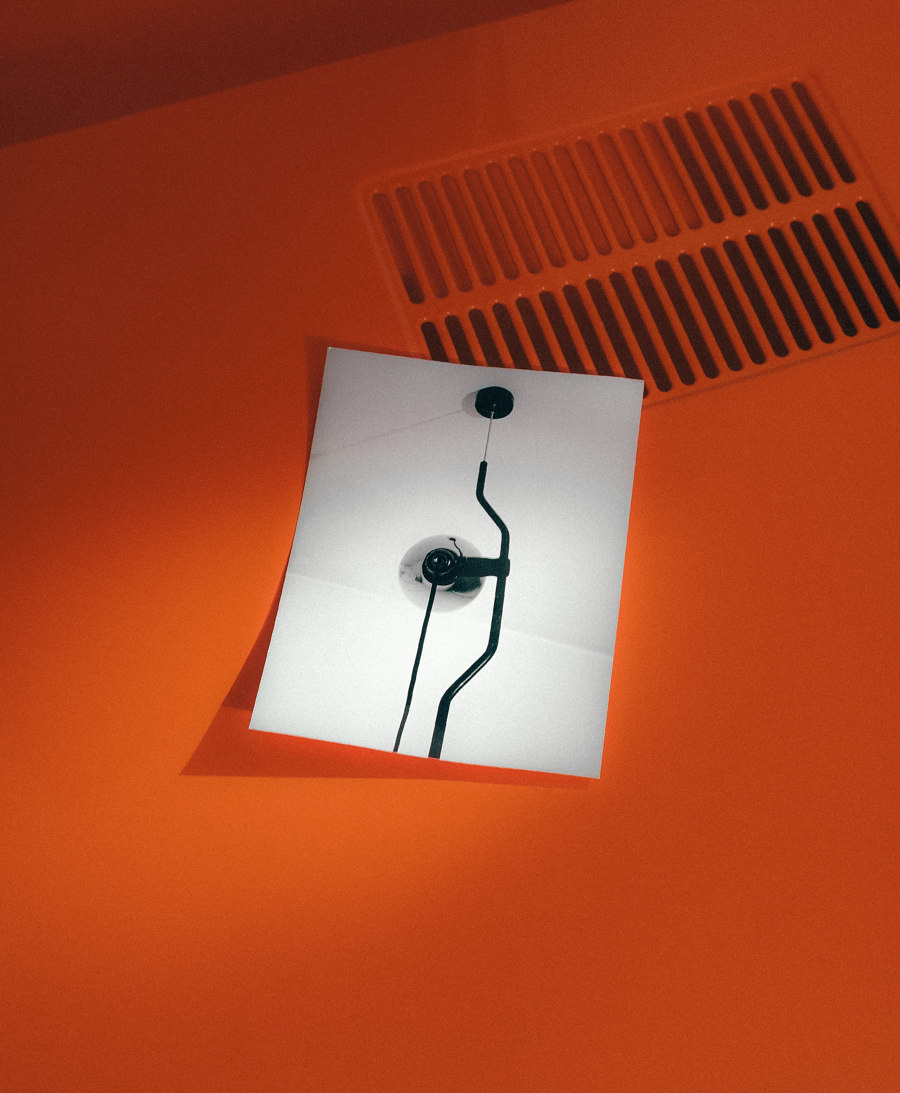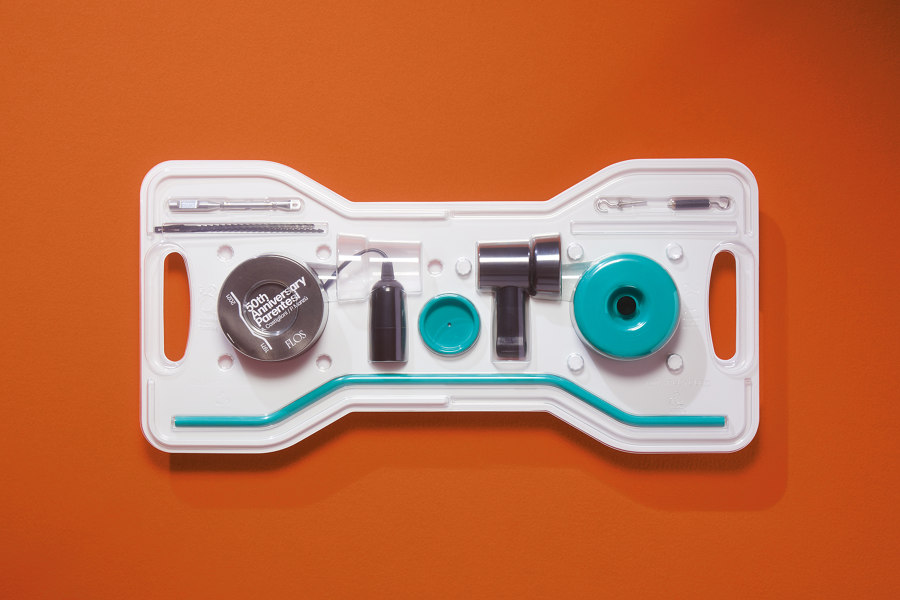Flos' classic Parentesi 50 gets a new coat of paint
Brand story by Nick Compton
Bovezzo, Italy
14.10.21
With its two new colours, turquoise and orange, the Parentesi 50 lamp by Flos pays homage to its designers Achille Castiglioni and Pio Manzù – the latter of whom is known as the designer of the iconic Fiat 127...
Best known as the designer of the Fiat 127, one of the most successful cars of all time, Pio Manzù was also the inspiration for Flos’ iconic Parentesi lamp

Best known as the designer of the Fiat 127, one of the most successful cars of all time, Pio Manzù was also the inspiration for Flos’ iconic Parentesi lamp
×In 1969, Pio Manzoni, better known as Pio Manzù, was one of the rising stars of Italian industrial design. A year earlier, he had designed a small, prototype, utilitarian car for Fiat. The design was way ahead of its time and never went into production. Another of his designs for Fiat though did roll off the production lines in Turin. The Manzù-designed 127 was released in 1971. Fiat sold a million of them within three years and the car was still in production in the 1990s.
Committed to simple, affordable but elegant design, Manzù would have been thrilled by the embrace of the 127. Unfortunately, he never got to enjoy its success. He crashed his Fiat 500 on the way to present the 127 designs to Fiat senior management and died on the way to the hospital. He was 30 years old.
After his tragic early death, Manzù’s widow gifted his design sketches to Achille Castiglioni. An admirer of Manzù, Castigliono worked with Flos to develop one of the sketches into what would become the Parentesi

After his tragic early death, Manzù’s widow gifted his design sketches to Achille Castiglioni. An admirer of Manzù, Castigliono worked with Flos to develop one of the sketches into what would become the Parentesi
×Manzù’s interests stretched beyond the automotive, though. His designs included the Cronotime desk clock and his talent was noticed by the elder statesmen of Italian design, including Achille Castiglioni. The two designers never met, but Manzù’s widow knew of Castiglioni’s admiration and offered him some of her husband’s sketches after his death.
One sketch, in particular, caught Castiglioni’s eye. The design was for a light-emitting tin, set on a rod running from floor to ceiling. The lamp could be repositioned, up or down, using a screw to keep it in place.
Sadly, Pio Manzù is now only remembered by the design cognoscenti, but the Parentesi re-issue is Flos’ reminder that he was ahead of his time and lost too soon
Manzù’s son, Giacomo Manzoni, says the design typified his father’s approach, ‘his obsession with simplicity, cost reduction, everyday objects.’ And Castiglioni’s daughter and curator of the Achille Castiglioni Foundation, Giovanna Castiglioni, says it was obvious why the design would hold such appeal for her father. ‘The sketch had all the elements to make Castiglioni fall in love.’ It was light, flexible and had the feel of a ready-made design.
Flos has re-issued the Parentesi to celebrate it’s 50th anniversary, re-creating the original packaging in recyclable PET

Flos has re-issued the Parentesi to celebrate it’s 50th anniversary, re-creating the original packaging in recyclable PET
×Castiglioni though thought he could refine the design while keeping true to the intent of Manzù’s original concept. It would be a collaboration in spirit. Working with the engineering team at lighting specialist Flos, he replaced the floor to ceiling rod with a suspended, weighted wire which could be simply unhooked from the ceiling.
The light bulb was mounted on a kinked, parenthesis-shaped tube. The adjusted design meant that the light could be repositioned along the wire and stay in place without the need for a screw while the bulb could rotate 360 degrees.
The co-design was released in 1971 as Parentesi with Castiglioni sharing authorship credits with Manzù. ‘A noble gesture that teaches respect for ideas in a world where it is often lacking,’ says Giacomo Manzù.
Castiglioni developed Manzù’s original idea of a lamp set on a floor-to-ceiling rod, devising a kinked parenthesis-shaped tube that could be moved along a weighted wire and stay in position without the need for screws

Castiglioni developed Manzù’s original idea of a lamp set on a floor-to-ceiling rod, devising a kinked parenthesis-shaped tube that could be moved along a weighted wire and stay in position without the need for screws
×Parentesi has become an iconic design that feels as fresh and radical now as it did half a century ago. Indeed, it’s raw, improvised, ready-made quality – belying the complex engineering behind it – and its spare minimalism feel absolutely contemporary.
Honouring the staying power of the design, Flos has re-released Parentesi in two new colours, turquoise and signal orange. The colour choices nod to the design’s co-creators. ‘The first was dear to Castiglioni, who had used it for home interiors. The second was the colour that Manzù used for his prototypes,’ explain Flos’ design curators, the architects Calvi Brambilla.
And Paolo Brambilla insists the design has a contemporary relevance that even Castiglioni and Manzù couldn’t have foreseen. ‘Looking at it through today’s eyes, we realise that, in a certain sense, its hybrid and nomadic character interprets the fluidity of our time much better than many objects around us,’ he says. Parentesi is easily unhooked and packed away.
When the Parentesi was released, Castiglioni shared authorship credits with Manzù: ‘A noble gesture that teaches respect for ideas in a world where it is often lacking,’ says Giacomo Manzù, the designer’s son

When the Parentesi was released, Castiglioni shared authorship credits with Manzù: ‘A noble gesture that teaches respect for ideas in a world where it is often lacking,’ says Giacomo Manzù, the designer’s son
בWhat we didn’t realise is that Parentesi, by its very nature, is also sustainable: although it is the child of an age usually associated with the waste of resources and pollution, its environmental impact is low.’
As Brambilla says, the bulb is simple to replace and the design can be easily disassembled, repaired or sorted into different materials for recycling (though it’s hard to imagine why anyone would want to relieve a Parentesi of active duty). Flos has even re-imagined the original transparent packaging in recyclable PET.
© Architonic









